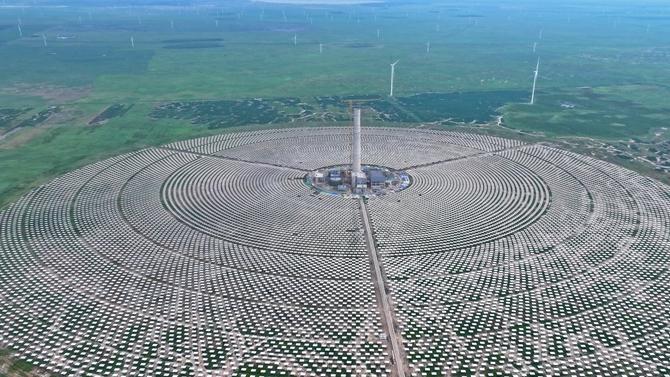Researchers discover chemosynthetic life in extreme depths of hadal trenches
HAIKOU, Aug. 1 (Xinhua) -- A group of Chinese researchers, in collaboration with international partners, have discovered the deepest, most extensive chemosynthesis-based communities of organisms known to exist on Earth during an expedition to the Kuril-Kamchatka Trench and the western Aleutian Trench, according to a recent research article published in Nature.
Hadal trenches are depressions in the seabed at depths of between 6,000 and 11,000 meters, occurring where the edge of one tectonic plate slides under another. These locations -- some of the least explored and understood environments on Earth -- have long been thought to harbor chemosynthesis-based communities of organisms.
These communities do not rely on sunlight, but instead obtain the energy required for metabolism through chemical reactions in geological fluids.
The researchers, led by the Chinese Academy of Sciences' Institute of Deep-sea Science and Engineering, used China's deep-sea manned submersible, Fendouzhe (Striver), to discover thriving chemosynthesis-based communities associated with abundant methane seeps in the two trenches. The communities span more than 2,500 kilometers at depths ranging from 5,800 to 9,533 meters.
These communities are sustained by hydrogen-sulfide-rich and methane-rich fluids that are transported along faults traversing deep sediment layers in the trenches, where methane is produced microbially from deposited organic matter, as indicated by isotopic analysis.
Given the geological similarities to other hadal trenches, such chemosynthesis-based communities may be more widespread than previously thought, the article notes.
These findings challenge current models of life at extreme limits and carbon cycling in deep ocean environments.
As more hadal chemosynthesis-based organism communities are discovered, people could uncover previously undocumented species, as well as currently unknown interactions between animals and microorganisms that have evolved under the high-pressure conditions of hadal zones, according to the article.
Photos
Related Stories
- China's nano "two-photon factory" sets world record
- China champions international ties in cutting-edge research
- Latest global rankings show shift in global research landscape
- Tsinghua's theater-based immersive neuroaesthetics research sparks interests: report
- Chinese scientists pioneer efficient paraxylene production from CO2
Copyright © 2025 People's Daily Online. All Rights Reserved.









